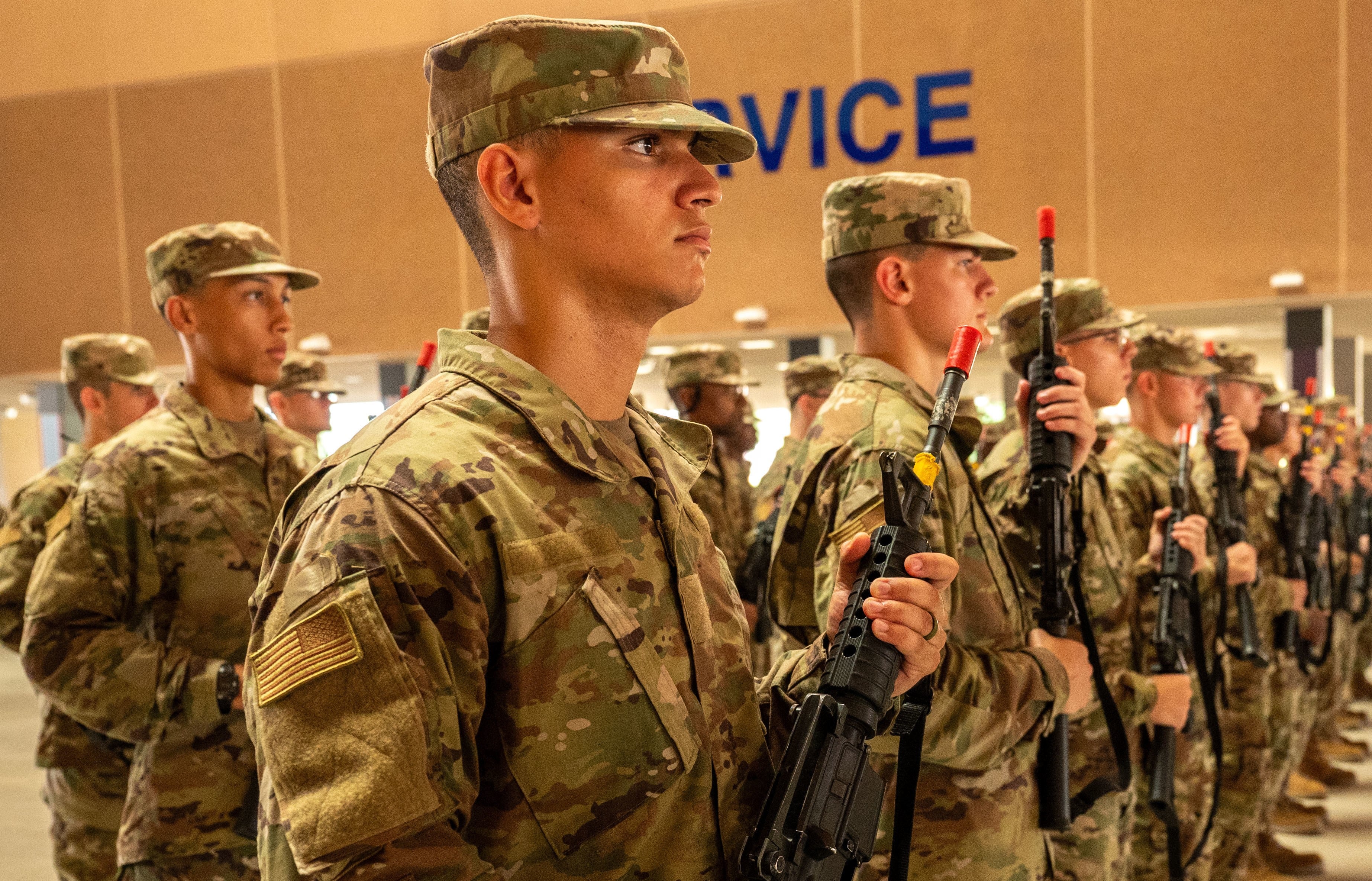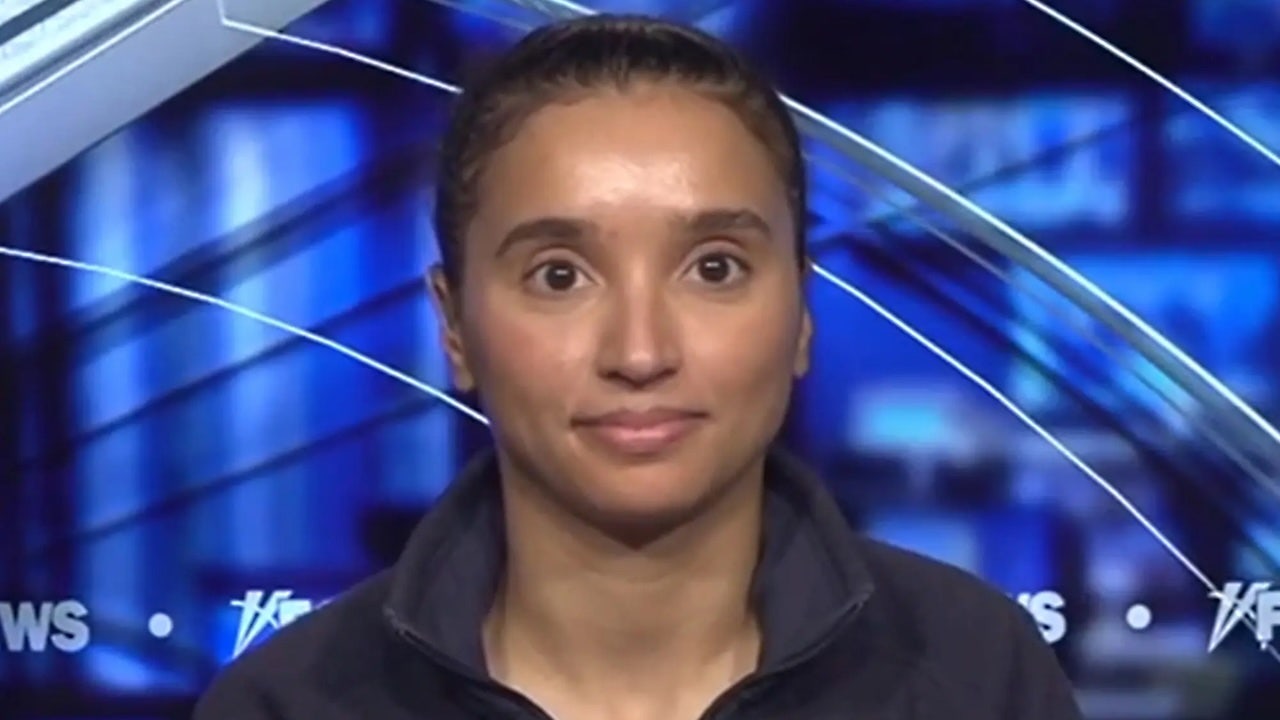How the Air Force plans to overhaul its recruiting efforts
Fresh from “ringing the bell” to announce its success in hitting fiscal year 2024 recruiting targets, the Air Force’s recruiting enterprise is shifting its attention to the future with a major restructuring effort aimed at streamlining communication and making it easier to shift or share resources between teams.
The new plan will also see the Air Force bring in an additional 370 recruiters.
As of Oct. 1, Air Force Recruiting Service is beginning a merger with Air University’s Jeanne M. Holm Center, which manages the service’s Reserve Officer Training Corps and officer and warrant officer training programs, to form a single entity: the Air Force Accessions Center.
The change had been in the works for nearly a year, driven by a desire to remove silos and build organizational consistency, Brig. Gen. Christopher Amrhein, the head of Air Force recruiting, told Air Force Times in an exclusive interview.
“You have a little bit of a bifurcated process, where you have us in Air Force Recruiting Service recruiting for [Officer Training School], but when you do the handoff, it goes to a completely different organization,” Amrhein said. “What we aim to be is more effective and agile, and be able to have it all under one command.”
RELATED
One practical reason for a merged approach came to the fore during the recently concluded recruiting year, when the Air Force’s ROTC recruiting program came up short by 127 allocations, Amrhein said.
Ultimately, the service was able to convene an extra officer recruiting board and supplement the missing ROTC accessions with conventional officer recruitment, but the process was more rushed and ad-hoc than it could have been, he said.
“If we could have seen it earlier, we probably could have designed it differently,” Amrhein said.
The merger will take place in stages, with the full transition to the new structure set to be complete by October 2025.
The new Air Force Accessions Center will continue to fall under Air Education and Training Command, which is also set to be rebranded at a future date as Airman Development Command, according to officials.
The move will not force a redistribution of troops in the Air Force recruiting enterprise, although some in-place realignments may eventually take place, officials said. While it’s clear that recruiting leaders, including Amrhein, are still developing their picture of what the fully realized Air Force Accessions Center will look like, he indicated it will help planners see recruiting opportunities and needs that might have been missed in the past.
“We actually have one year to build out the most effective and efficient and agile overall organization,” Amrhein said. “We’ve got some, I’ll call them red-teaming experts, to make sure we don’t miss blind spots. But how we look right now is probably not how we’re going to look in October, and that’s why we have this year to really see where there are opportunities, or if there are gaps and seams, to close those down for the final organizational structure.”
If unity and greater efficiency do translate to more accessions, the change will come at a critical time. While the Air Force barely managed to meet its goal of recruiting 27,100 new enlisted recruits in fiscal 2024, it faces a steep increase this year, with a target of 32,500 enlisted accessions. It also follows the launch of the Air Force Warrant Officer Training School, at the Holm Center out of Maxwell Air Force Base, Alabama, in July.
The first 80 of 370 planned additional recruiters went to schoolhouse training in August, Amrhein said. And while that recruiting plus-up is expected to help the service meet its larger recruiting target, Amrhein acknowledged it comes with challenges too.
“You’ve got to be careful that you don’t over-saturate a recruiting office,” he said.
RELATED

To avoid doing that, he said, the Air Force is creating “agile recruiting cells” with three recruiters each that can travel temporarily to cities or regions to host events or develop leads.
“So that gives us a little bit more flexibility, and that increase gives us some sustainability,” Amrhein said.
Finding ways to get a better conversion rate out of Air Force ROTC and Junior ROTC programs may be a big benefit to the restructuring, Amrhein said. For example, he plans to explore the possibility of bringing back a two-year ROTC program, in addition to the existing four-year program, to allow more students to get on an Air Force recruitment track.
“Sometimes people get inspired or interested or attracted to the military or our Air Force and Space Force at different points in time,” he said. “And do we have an agile enough system that we can now partner or utilize [Officer Training School] maybe differently than just the four- or three-year program that is ROTC today.”
In another example of finding efficiencies, Amrhein referred to the 40 or so newly commissioned second lieutenants – known as “gold bars” – who are tasked with working with recruiting squadrons to find likely candidates for ROTC programs. Under the new construct, he said, these young officers might be able to serve recruitment goals more broadly, looking holistically at the Air Force’s needs.
Ultimately, he said, the move should have all elements of Air Force recruiting working more collaboratively toward their common goals.
“I think what we’re going to see is that when we start talking at the higher echelon with staff and commands, that the integration will happen earlier and it will happen more frequently,” Amrhein said. “That is an aim of mine, as the commander of the accession center: to inspire the crosstalk, and have the authorities to be the most effective operation from the entire cradle-to-grave spectrum.”
Hope Hodge Seck is an award-winning investigative and enterprise reporter covering the U.S. military and national defense. The former managing editor of Military.com, her work has also appeared in the Washington Post, Politico Magazine, USA Today and Popular Mechanics.







